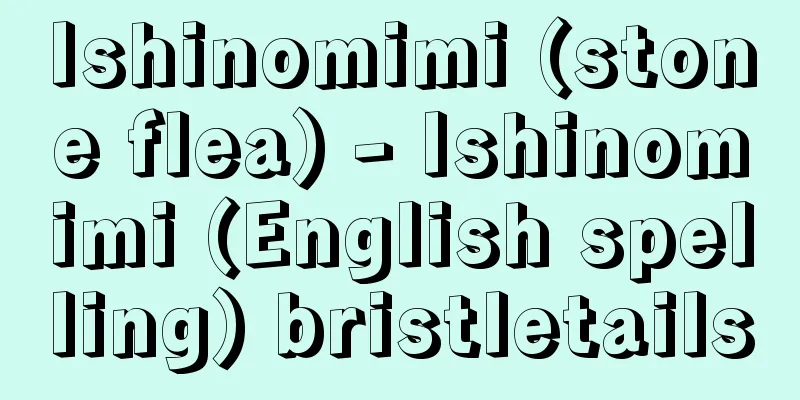Benign prostatic hyperplasia

|
What kind of disease is it? Main symptoms and progression The prostate is an organ found only in men, and works together with the seminal vesicles to produce semen. It is about the size of a chestnut and surrounds the urethra. The prostate gland becomes enlarged and presses against the urethra, causing various symptoms, known as benign prostatic hyperplasia. This disease is seen in most middle-aged and elderly men, but the size of the prostate gland varies from person to person, and some people never experience any symptoms. Symptoms include difficulty urinating, frequent trips to the bathroom, frequent urination at night, a feeling of residual urine, urinary incontinence, and discomfort in the groin. The first symptoms are frequent urination at night, taking a long time to urinate even after going to the toilet, and being unable to urinate without straining. As the disease progresses, the feeling of having to urinate gradually becomes stronger. Bacteria may also grow in the residual urine that accumulates in the bladder, which may cause kidney stones. If the condition worsens, the patient will be unable to urinate on their own, and the bladder will become full of urine and leak out, resulting in overflow incontinence, and urine will reflux and reach the kidneys, causing kidney function to deteriorate. If the patient develops urinary retention, which means the patient is completely unable to urinate, this can lead to dangerous complications such as chronic renal failure, so early treatment is necessary. It is very important to distinguish it from prostate cancer, which causes almost the same symptoms, so it is essential for people with symptoms to be diagnosed by a doctor. Benign prostatic hyperplasia does not lead to prostate cancer, but the two often occur together. ● Causes of the disease and how symptoms develop It is believed that the onset of the disease is related to male hormones (androgens) and aging. It has also been pointed out that it may be related to inflammation of the prostate, genes, viruses, etc. ●Characteristics of the disease Approximately half of men in their 60s, and almost all men over 70, suffer from benign prostatic hyperplasia. However, only about 10% of these men complain of symptoms. EBM checks on common treatments and care [Treatment and care] Use of alpha-blockers [Rating] ☆☆☆☆☆ [Evaluation Points] Highly reliable clinical studies have confirmed that it is effective in improving symptoms such as frequent urination, residual urine, and difficulty urinating. (1)(2) [Treatment and care] Use of 5α-reductase inhibitors [Rating] ☆☆☆☆☆ [Evaluation Points] It has been confirmed through highly reliable clinical studies that it reduces the volume of the prostate and improves symptoms. (3) [Treatment and care] Use antiandrogens [Rating] ☆☆☆ [Evaluation points] Although there is insufficient evidence to support the effectiveness of antiandrogens, there are reports that they are as effective as 5α-reductase inhibitors, the effectiveness of which has been confirmed overseas. (4) [Treatment and care] Uses plant extract preparations and amino acid preparations [Evaluation] ☆☆☆ [Evaluation Points] There are reports that it improves subjective symptoms, but the clinical effectiveness is unclear. There are reports that it is effective when used in combination with other drugs. It is supported by expert opinion and experience. [Treatment and care] Use of herbal medicine [Rating] ☆☆☆ [Evaluation points] Although there is insufficient evidence to support its effectiveness, there are reports that it is effective when used in combination with other drugs. [Treatment and care] Perform subcapsular prostatectomy [Rating] ☆☆☆☆ [Evaluation Points] There is a method to cut open the abdomen and remove the prostate. Although there is a high incidence of postoperative complications, it has been reported to be effective, especially in cases where the prostate is large. (2)(5) [Treatment and care] Perform transurethral resection of the prostate (TURP) [Rating] ☆☆☆☆☆ [Evaluation points] This method involves inserting an endoscope through the urethra and removing the prostate with a laser or other device. It has been confirmed through highly reliable clinical studies that this method improves urinary dysfunction in a greater percentage of cases compared to conservative treatments such as drug therapy. (2)(5) [Treatment and care] Saline irrigated transurethral resection of the prostate (bipolar-TURP) [Rating] ☆☆☆☆☆ [Evaluation Points] This is the same procedure as regular TURP, but uses saline to reduce side effects from surgery. It has been confirmed to be an effective treatment by highly reliable clinical studies. (6) [Treatment and care] Perform transurethral incision of the prostate (TUIP) [Rating] ☆☆☆☆ [Evaluation points] This method enlarges the prostatic urethra by incising the prostate to the depth of the capsule, and highly reliable clinical studies have shown that it is effective for treating relatively small prostates. (7) [Treatment and care] Laser ablation of the prostate [Rating] ☆☆☆☆ [Evaluation points] This is a treatment method that irradiates a high-power laser through an endoscope inserted transurethrally. There is little risk of bleeding, and it can be performed on large prostates. Its effectiveness has been shown in reliable clinical studies. [Treatment and care] Holmium laser enucleation of the prostate (HoLEP) [Rating] ☆☆☆☆☆ [Evaluation points] This method involves irradiating the prostate with a holmium laser through an endoscope inserted transurethrally to remove the prostate. Its effectiveness has been shown in highly reliable clinical studies. (8) Checking commonly used drugs with EBM Drug for treating urinary disorders [Drug use] Alpha-blocker [Drug name] Harnal (tamsulosin hydrochloride) (1)(2) [Rating] ☆☆☆☆☆ [Drug name] Flibas (naftopidil) [Rating] ☆☆☆☆☆ [Drug name] Urief (Silodosin) [Rating] ☆☆☆☆☆ [Drug name] Vasomet/Hytrasin (Terazosin hydrochloride hydrate) (1)(2) [Rating] ☆☆☆☆☆ [Drug name] Ebrantil (Urapidil) [Rating] ☆☆☆☆☆ [Evaluation points] Its effectiveness in improving symptoms such as frequent urination, residual urine, and difficulty urinating has been confirmed through highly reliable clinical studies. [Drug name] Minipress (prazosin hydrochloride) [Rating] ☆☆☆ [Evaluation points] Although the effect of this medicine in improving urinary problems appears to be weak, its effectiveness has been confirmed in clinical studies. [Medicinal use] 5α-reductase inhibitor [Drug name] Avodart (dutasteride) (3) [Rating] ☆☆☆☆☆ [Evaluation points] It has been confirmed through highly reliable clinical studies that it reduces prostate volume and improves subjective symptoms. [Medicinal use] Antiandrogen [Drug name] Prostal/Lutral (chlormadinone acetate) (4) [Rating] ☆☆☆ [Evaluation points] Although there is insufficient evidence to support its effectiveness, there are reports that it has the same effect as 5α-reductase inhibitors, the effectiveness of which has been confirmed overseas. [Drug name] Parcelin/Perias (allylestrenol) (9) [Rating] ☆☆☆ [Evaluation points] Clinical studies have confirmed that although prostate volume does not change, maximum urinary flow rate improves. [Medicinal use] Plant extract preparation, amino acid preparation [Drug name] Eviprostat (a combination of Oumegasasou extract and Aspen extract) [Rating] ☆☆☆ [Evaluation points] There are reports that it improves subjective symptoms, but the clinical effectiveness is unclear. There are reports that it is effective when used in combination with other drugs. [Drug name] Paraprost (L-glutamic acid, L-alanine, aminoacetic acid combination drug) [Rating] ☆☆☆ [Evaluation points] Although there is insufficient evidence to show its effectiveness, it is supported by expert opinion and experience. [Drug name] Cernilton (Cernitin Pollen Extract) (10) [Rating] ☆☆☆ [Evaluation points] It has been suggested that it improves symptoms such as nocturia, but it has been reported that it has no effect on improving objective findings. [Medicinal use] Chinese herbal medicine [Drug name] Hachimijiogan, Goshajinkigan [Rating] ☆☆☆ [Evaluation points] Although there is insufficient evidence to show its effectiveness, there are reports that symptoms have improved when used in combination with other medications. Overall, it is currently the most reliable treatment method. <br /> Surgery may be necessary If the degree of prostate enlargement is severe, causing urinary retention (a state in which no urine is produced despite the need to urinate) or urine remains in the bladder even after urination, making it necessary to insert a catheter to catheterize, surgery is required to remove the prostate gland that is compressing the urinary tract and improve the urethra. The most common surgical method currently used is transurethral resection of the prostate, but recently enucleation procedures using a holmium laser have also been performed. Medications for treating urinary disorders are also used. If symptoms such as frequent urination, residual urine, or difficulty urinating are present but it is determined that immediate surgery is not necessary, first one of the alpha-blockers such as Harnal (tamsulosin hydrochloride), Flivas (naftopidil), Urief (silodosin), Vasomet/Hytrasin (terazosin hydrochloride hydrate), Ebrantil (urapidil), or Minipress (prazosin hydrochloride) is used and the progress is observed to see if symptoms improve. If the prostate is large, the use of a 5α-reductase inhibitor in combination is considered. If these treatments do not provide sufficient improvement, surgical treatment may be required. There are clinical studies that question the effectiveness of anti-androgen drugs, and some guidelines state that they lower PSA levels, which is useful for early detection of prostate cancer ("Guidelines for the Treatment of Benign Prostatic Hyperplasia", Japanese Urological Association, 2011), so these drugs are definitely worth considering. It is important to distinguish it from cancer The most important point about this disease is not to overlook prostate cancer, which causes symptoms similar to those of benign prostatic hyperplasia. It is highly unlikely that benign prostatic hyperplasia will worsen and develop into prostate cancer, but the possibility of both benign prostatic hyperplasia and prostate cancer coexisting cannot be denied. Therefore, if you do not undergo surgery, it is necessary to have regular check-ups by a urologist and blood tests. (1)McVary KT, Roehrborn CG, Avins AL, et al. Update on AUA guideline on the management of benign prostatic hyperplasia. J Urol. 2011; 185:1793. Source: "EBM: A book that explains correct treatment" Information about the book "EBM: A book that explains correct treatment" |
|
どんな病気でしょうか? ●おもな症状と経過 前立腺(ぜんりつせん)は男性にのみある臓器で、精のうとともに精液をつくる働きをするところです。栗(くり)の実のような大きさで、尿道を取り囲むようにしてあります。 この前立腺がこぶ状に肥大して尿道を圧迫し、さまざまな症状を引きおこすのが前立腺肥大症(ひだいしょう)です。中高年の男性のほとんどにみられる病気ですが、こぶの大きさには個人差があり、自覚症状のないまま終わる人もいます。 症状としては、尿がでにくくなる、たびたびトイレに行く頻尿(ひんにょう)、夜間頻尿、残尿感、尿漏れ、脚の付け根の不快感などが現れます。 最初の症状は夜間頻尿や、トイレに行っても排尿までに時間がかかる、いきまないと尿がでないといったものです。病気が進んでくると、残尿感が次第に強まります。また膀胱(ぼうこう)にたまった残尿のなかで細菌が繁殖し、結石(けっせき)の原因となることもあります。 さらに悪化すると、自力での排尿ができなくなり、膀胱が尿で一杯になって漏れだす溢流性尿失禁(いつりゅうせいにょうしっきん)になるとともに、尿が逆流してしまい腎臓(じんぞう)まで達することとなります。そのため腎臓の働きが悪化したりします。まったく尿がでなくなる尿閉(にょうへい)をおこすと慢性腎不全など危険な合併症を引きおこすこともあり、早めの処置が必要です。 ほぼ同じ症状を引きおこす前立腺がんとの区別が非常に大切で、症状のある人は医師の診断が欠かせません。 前立腺肥大症が悪化して前立腺がんになることはありませんが、両者を合併していることはしばしばあります。 ●病気の原因や症状がおこってくるしくみ 発症には男性ホルモン(アンドロゲン)と加齢が関係していると考えられています。また、前立腺の炎症、遺伝子、ウイルスなどとの関係も指摘されています。 ●病気の特徴 60歳代の男性の約半数、70歳を超えるとほぼすべての男性に前立腺肥大症が認められます。ただし、症状を訴える人はそのうちの10パーセント程度です。 よく行われている治療とケアをEBMでチェック [治療とケア]α遮断薬を用いる [評価]☆☆☆☆☆ [評価のポイント] 頻尿、残尿感、排尿困難などの症状を改善する効果があるということが、非常に信頼性の高い臨床研究によって確認されています。(1)(2) [治療とケア]5α還元酵素阻害薬を用いる [評価]☆☆☆☆☆ [評価のポイント] 前立腺の体積を減少させ、症状を改善させることが非常に信頼性の高い臨床研究によって確認されています。(3) [治療とケア]抗アンドロゲン薬を用いる [評価]☆☆☆ [評価のポイント] 抗アンドロゲン薬はその有効性を支持する根拠は十分ではありませんが、海外で有効性が確認されている5α還元酵素阻害薬と同等の効果があるという報告もあります。(4) [治療とケア]植物エキス製剤やアミノ酸製剤を用いる [評価]☆☆☆ [評価のポイント] 自覚的な症状を改善させるという報告もありますが、臨床効果ははっきりしません。他剤との併用により有効であるという報告があります。専門家の意見や経験から支持されています。 [治療とケア]漢方薬を用いる [評価]☆☆☆ [評価のポイント] 有効性を支持する根拠は十分ではありませんが、他剤との併用により有効であるという報告があります。 [治療とケア]前立腺被膜下摘除術(ひまくかてきじょじゅつ)を行う [評価]☆☆☆☆ [評価のポイント] おなかを切って前立腺を切除する方法をとることがあります。術後の合併症の頻度が高いですが、特に前立腺が大きい場合には有効であることが報告されています。 (2)(5) [治療とケア]経尿道的(けいにょうどうてき)前立腺切除術(TURP)を行う [評価]☆☆☆☆☆ [評価のポイント] 尿道から内視鏡を入れ、レーザーなどで前立腺を切除する方法で、薬物療法など保存的治療と比較して、排尿障害が改善する割合が大きいことが非常に信頼性の高い臨床研究によって確認されています。(2)(5) [治療とケア]生理食塩水灌流(かんりゅう)経尿道的前立腺切除術(bipolar-TURP) [評価]☆☆☆☆☆ [評価のポイント] 通常のTURPと同じ手技ですが手術による副作用を軽減するため、生理食塩水を用いる方法です。非常に信頼性の高い臨床研究によって有効な治療法であることが確認されています。(6) [治療とケア]経尿道的前立腺切開術(TUIP)を行う [評価]☆☆☆☆ [評価のポイント] 前立腺を被膜の深さまで切開することにより前立腺尿道部を開大させる方法で、比較的小さい前立腺に対して治療効果があることが非常に信頼性の高い臨床研究によって示されています。(7) [治療とケア]レーザー前立腺蒸散術(じょうさんじゅつ) [評価]☆☆☆☆ [評価のポイント] 経尿道的に挿入した内視鏡のもとで高出力のレーザーを照射する治療法です。出血のリスクが少なく、大きな前立腺に対しても施行可能です。その有効性については信頼性の高い臨床研究によって示されています。 [治療とケア]ホルミウムレーザー前立腺核出術(HoLEP)を行う [評価]☆☆☆☆☆ [評価のポイント] 経尿道的に挿入した内視鏡のもとでホルミウムレーザーを照射し、前立腺を核出する方法です。その有効性については非常に信頼性の高い臨床研究によって示されています。(8) よく使われている薬をEBMでチェック 排尿障害治療薬 [薬用途]α遮断薬 [薬名]ハルナール(タムスロシン塩酸塩)(1)(2) [評価]☆☆☆☆☆ [薬名]フリバス(ナフトピジル) [評価]☆☆☆☆☆ [薬名]ユリーフ(シロドシン) [評価]☆☆☆☆☆ [薬名]バソメット/ハイトラシン(テラゾシン塩酸塩水和物)(1)(2) [評価]☆☆☆☆☆ [薬名]エブランチル(ウラピジル) [評価]☆☆☆☆☆ [評価のポイント] 頻尿、残尿感、排尿困難などの症状を改善する効果について、非常に信頼性の高い臨床研究によって確認されています。 [薬名]ミニプレス(プラゾシン塩酸塩) [評価]☆☆☆ [評価のポイント] 排尿障害を改善する作用は弱いようですが、効果のあることは臨床研究で確認されています。 [薬用途]5α還元酵素阻害薬 [薬名]アボルブ(デュタステリド)(3) [評価]☆☆☆☆☆ [評価のポイント] 前立腺の体積を減少させ、自覚症状を改善させることが、非常に信頼性の高い臨床研究によって確認されています。 [薬用途]抗アンドロゲン薬 [薬名]プロスタール/ルトラール(クロルマジノン酢酸エステル)(4) [評価]☆☆☆ [評価のポイント] 有効性を支持する根拠は十分ではありませんが、海外で有効性が確認されている5α還元酵素阻害剤と同等の効果があるという報告もあります。 [薬名]パーセリン/ペリアス(アリルエストレノール)(9) [評価]☆☆☆ [評価のポイント] 前立腺の容積は変わりませんが、最大尿流速度は改善するということが、臨床研究で確認されています。 [薬用途]植物エキス製剤・アミノ酸製剤 [薬名]エビプロスタット(オオウメガサソウエキス・ハコヤナギエキス配合剤) [評価]☆☆☆ [評価のポイント] 自覚的な症状を改善させるという報告もありますが、臨床効果ははっきりしません。他剤との併用により有効であるという報告があります。 [薬名]パラプロスト(L-グルタミン酸・L-アラニン・アミノ酢酸配合剤) [評価]☆☆☆ [評価のポイント] 有効性を示す根拠は十分ではありませんが、専門家の意見や経験から支持されています。 [薬名]セルニルトン(セルニチンポーレンエキス)(10) [評価]☆☆☆ [評価のポイント] 夜間頻尿などの症状を改善させることが示唆されていますが、他覚的所見の改善効果はないことが報告されています。 [薬用途]漢方薬 [薬名]八味地黄丸(はちみじおうがん)、牛車腎気丸(ごしゃじんきがん) [評価]☆☆☆ [評価のポイント] 有効性を示す根拠は十分ではありませんが、他剤との併用で症状が改善したという報告があります。 総合的に見て現在もっとも確かな治療法 手術が必要なことも 前立腺の肥大の程度が高度で、尿閉状態(尿意があるにもかかわらず、尿がまったくでない状態)になったり、排尿後も膀胱に尿が残り、管を入れて導尿(どうにょう)する必要が生じたりする場合には、尿の通り道を圧迫している前立腺を除去し、尿道を改善する手術が必要になります。現在行われている一般的な手術方法は、経尿道的前立腺切除術ですが、最近ではホルミウムレーザーを用いた核出術なども行われています。 排尿障害治療薬も用いる 頻尿、残尿感、排尿困難などの症状があるものの、ただちに手術が必要ではないと判断された場合には、まずハルナール(タムスロシン塩酸塩)、フリバス(ナフトピジル)、ユリーフ(シロドシン)、バソメット/ハイトラシン(テラゾシン塩酸塩水和物)、エブランチル(ウラピジル)、ミニプレス(プラゾシン塩酸塩)といったα遮断薬のいずれかを用いて、症状が改善するかどうか経過を観察します。前立腺が大きい場合には5α還元酵素阻害薬の併用を考慮します。 これらの治療で改善が不十分な場合には外科的治療を行うことになります。 抗アンドロゲン薬については効果を疑問とする臨床研究や、前立腺がんの早期発見に役立つPSA値を低下させるとするガイドライン(「前立腺肥大症診療ガイドライン」日本泌尿器(ひにょうき)科学会、2011年)もあり、検討が必要な薬でしょう。 がんとの区別が大切 この病気でもっとも重要なポイントは、前立腺肥大症と同じような症状をおこす前立腺がんを見逃さないことです。 前立腺肥大症が悪化して前立腺がんになることはまず考えられませんが、前立腺肥大症と前立腺がんの両方が併存する可能性は否定できません。 そこで、手術しない場合には、定期的に泌尿器科医の診察を受け、血液検査を行うことが必要です。 (1)McVary KT, Roehrborn CG, Avins AL, et al. Update on AUA guideline on the management of benign prostatic hyperplasia. J Urol. 2011; 185:1793. 出典 法研「EBM 正しい治療がわかる本」EBM 正しい治療がわかる本について 情報 |
<<: Booty - Senrihin (English spelling)
>>: Prostate cancer - prostatic carcinoma
Recommend
Regulus regulus (English spelling) Regulusregulus
...The name "goldcrest" comes from its ...
Mochizuki
[1] [Noun] ① The moon on the fifteenth night of th...
Refractories
This refers to materials that can withstand extre...
Skagerrak Strait - Skagerrak (English spelling)
A strait between the Danish peninsula of Jutland a...
Imahama - Imahama
...Population: 57,082 (1995). In the Middle Ages,...
Ame no Hiboko no Mikoto - Ame no Hiboko no Mikoto
...It is located in Izushi-cho, Izushi-gun, Hyogo...
Bailey, A.
…The Theosophical Society, which was established ...
Murzilka (English spelling)
…In France, there are many excellent Catholic chi...
Kitano Tsunetomi
1880-1947 A Japanese painter from the Meiji to Sh...
Procopius (of Caesarea)
Around 500? Historian of the Eastern Roman Empire....
Yuri [town] - Yuri
A former town in Yuri County, located in the south...
Nuptse
… [Natural Environment] The summit is pyramidal, ...
Class solidarity - class solidarity
…It refers to the close ties formed by individual...
Uri (state)
The fourth canton (state) of the Swiss Confederati...
Magnoliaceae
...The buds of the white magnolia and white magno...









